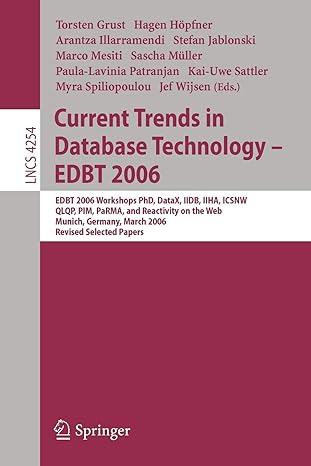Question
GUTS! THE PACK A Standard 52 card deck is used. THE DEAL Each player is dealt 2 cards; face down, starting with the player to
GUTS!
THE PACK
A Standard 52 card deck is used.
THE DEAL
Each player is dealt 2 cards; face down, starting with the player to the left of the dealer.
THE PLAY
Each round starts with an ante. Starting with the player to dealer's left and continuing clockwise around the table, ending with the dealer, each player in turn says either "in" or "out."
Players who say "out" cannot win the pot, but do not lose any extra money. If more than one player says "in," all those who are "in" show their cards, and the player with the best cards wins the pot.
SCORING:
- Aces are high - Any pair of equal cards beats any two unequal cards - A higher pair beats a lower pair - Between two non-pair hands, the hand with the highest card wins - If two hands have equal high cards, the hand whose other card is higher wins.
Coded in Java! already have a DeckOfCards and Card classes set up (will provide below) would like to have one more blueprint if possible (preferably something like Hand)
Driver class will be GUTS.
----------------------------------------DeckOfCards--------------------------------------------------------------------
public class DeckOfCards
{
private static final String[] faces =
{"Ace", "Deuce", "Three", "Four", "Five", "Six",
"Seven", "Eight", "Nine", "Ten", "Jack", "Queen", "King"};
private static final String[] suits =
{"Hearts", "Diamonds", "Clubs", "Spades"};
private static final int NUMBER_OF_CARDS = 52; // constant number of cards
private ArrayList
// constructor fills deck of cards
public DeckOfCards()
{
// populate deck with Card objects
for (int count = 0; count < 52; count++)
deck.add( new Card(count%13+1, faces[count % 13], suits[count / 13]));
}
public String toString() {
String ans = "";
for (int i=0;i ans = ans +deck.get(i).toString() + " "; return ans; } // shuffle deck of cards with one-pass algorithm public void shuffle() { Collections.shuffle(deck); } } ---------------------------Card-------------------------------------------------------------------------------- public class Card { private String face; // face of card private String suit; // suit of card private int value; // 1 to 13 for value // constructor public Card(int num,String cardFace, String cardSuit) { face = cardFace; // initialize face of card suit = cardSuit; // initialize suit of card value = num; } // return String representation of Card public String toString() { return value + ":" + face + " of " + suit; } public String getFace() { return face; } public void setFace(String face) { this.face = face; } public String getSuit() { return suit; } public void setSuit(String suit) { this.suit = suit; } public int getValue() { return value; } public void setValue(int value) { this.value = value; } } // end class Card
Step by Step Solution
There are 3 Steps involved in it
Step: 1

Get Instant Access to Expert-Tailored Solutions
See step-by-step solutions with expert insights and AI powered tools for academic success
Step: 2

Step: 3

Ace Your Homework with AI
Get the answers you need in no time with our AI-driven, step-by-step assistance
Get Started


